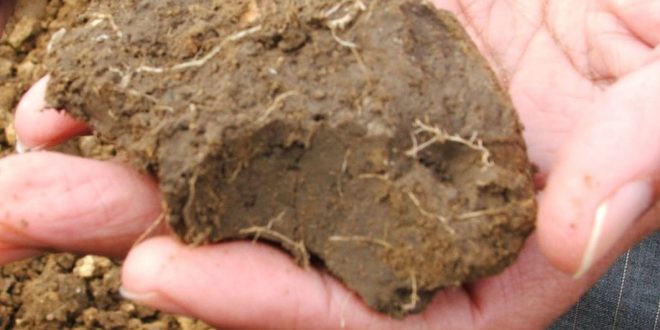A new study suggests higher temperatures could release more carbon than we thought, potentially creating a dangerous feedback loop that would cause the planet to get hotter and hotter.
The research, led by Jerry Melillo, distinguished scientist at the Marine Biological Laboratory, appears in the Oct. 6 issue of Science.
Melillo and colleagues began this pioneering experiment in 1991 in a deciduous forest stand at the Harvard Forest in Massachusetts. They buried electrical cables in a set of plots and heated the soil five degrees Celsius above the ambient temperature of control plots. Over the course of the 26-year experiment, which is still ongoing, the warmed plots lost 17 percent of the carbon that had been stored in organic matter in the top 60 centimeters of soil.
“To put this in context,” Melillo said, “each year, mostly from fossil fuel burning, we are releasing about 10 billion metric tons of carbon into the atmosphere. That’s what’s causing the increase in atmospheric carbon dioxide concentration and global warming. The world’s soils contain about 3,500 billion metric tons of carbon. If a significant amount of that soil carbon is added to the atmosphere, due to microbial activity in warmer soils, that will accelerate the global warming process. And once this self-reinforcing feedback begins, there is no easy way to turn it off. There is no switch to flip.”
A cyclical response
Over the course of the experiment, Melillo’s team observed fluctuations in the rate of soil carbon emission from the heated plots, indicating cycles in the capacity of soil microbes to degrade organic matter and release carbon. Phase I, from 1991 to 2000, was a period of substantial soil carbon loss that was rapid at first, then slowed to near zero. In Phase II, from 2001 to 2007, there was no difference in carbon emissions between the warmed and the control plots. During that time, the soil microbial community in the warmed plots was undergoing reorganization that led to changes in the community’s structure and function.
In Phase III, from 2008 to 2013, carbon release from heated plots again exceeded that from control plots. This coincided with a continued shift in the soil microbial community. Microbes that can degrade more recalcitrant soil organic matter, such as lignin, became more dominant, as shown by genomic and extracellular enzyme analyses. In Phase IV, from 2014 to current, carbon emissions from the heated plots have again dropped, suggesting that another reorganization of the soil microbial community could be underway. If the cyclical pattern continues, Phase IV will eventually transition to another phase of higher carbon loss from the heated plots.
“This work emphasizes the value of long-term ecological studies that are the hallmark of research at the MBL’s Ecosystems Center,” said David Mark Welch, MBL’s director of research. “These large field studies, combined with modeling and an increasingly sophisticated understanding of the role of microbial communities in ecosystem dynamics, provide new insight to the challenges posed by climate change.”
“The future is a warmer future. How much warmer is the issue,” Melillo said. “In terms of carbon emissions from fossil fuels, we could control that. We could shut down coal-fired power plants, for example. But if the microbes in all landscapes respond to warming in the same way as we’ve observed in mid-latitude forest soils, this self-reinforcing feedback phenomenon will go on for a while and we are not going to be able to turn those microbes off. Of special concern is the big pool of easily decomposed carbon that is frozen in Arctic soils. As those soils thaw out, this feedback phenomenon would be an important component of the climate system, with climate change feeding itself in a warming world.”
Agencies/Canadajournal
 Canada Journal – News of the World Articles and videos to bring you the biggest Canadian news stories from across the country every day
Canada Journal – News of the World Articles and videos to bring you the biggest Canadian news stories from across the country every day




Scientists estimate that the soil contains roughly three times the amount of carbon that is present in the Earth’s atmosphere. Climate change may get accelerated dramatically if the CO2 trapped in the soil gets released at increasingly faster rates.
Over the next 100 years, experts predict that deeper soil layers will warm at roughly the same rate as surface soils – and this could spell disaster for our climate